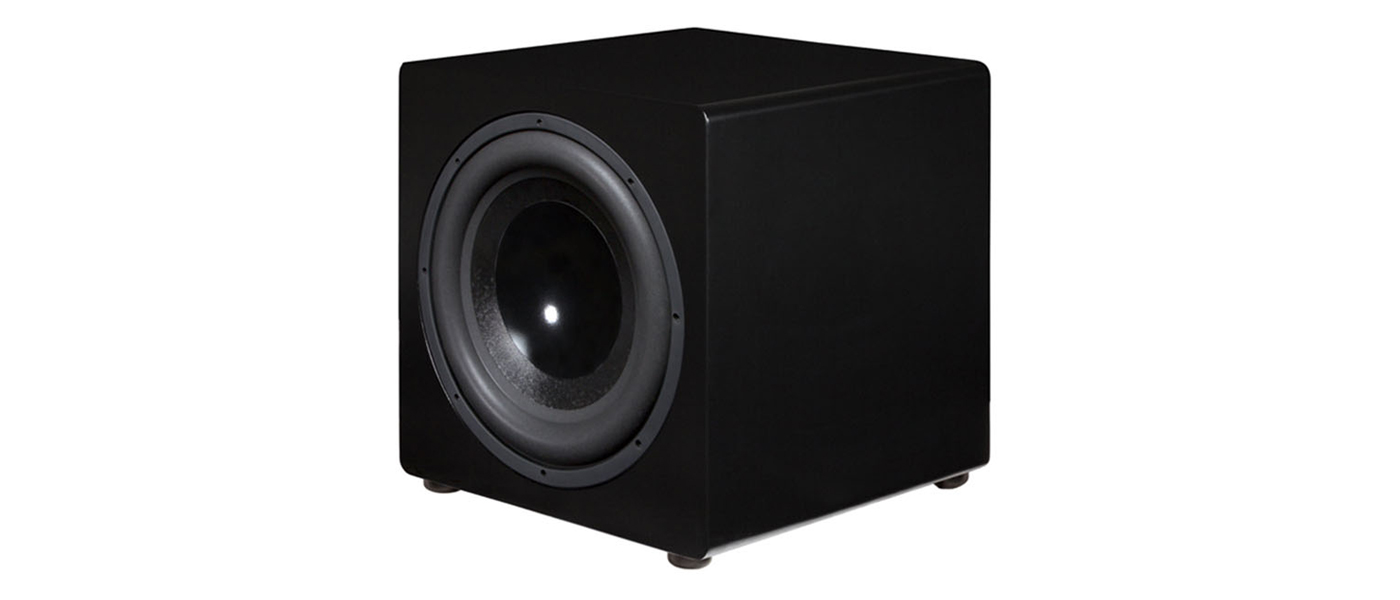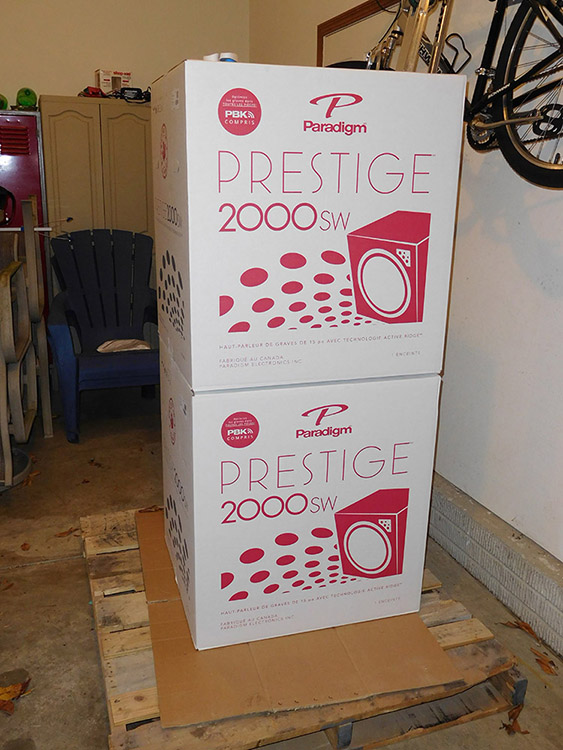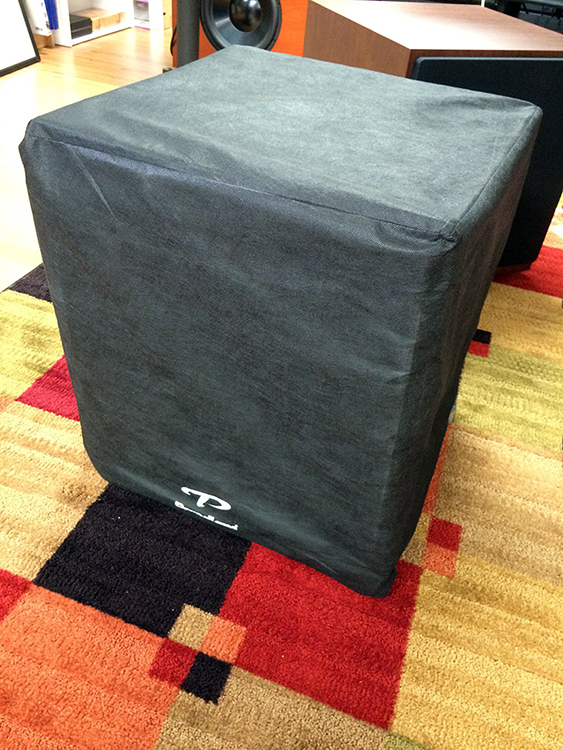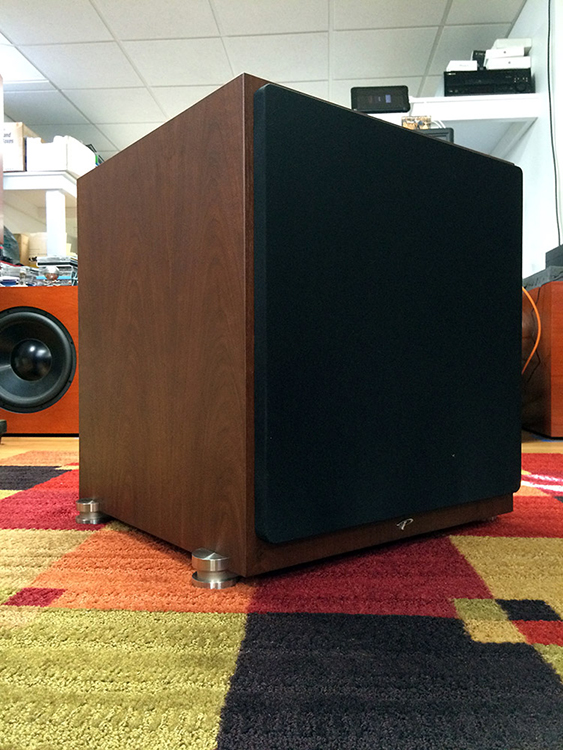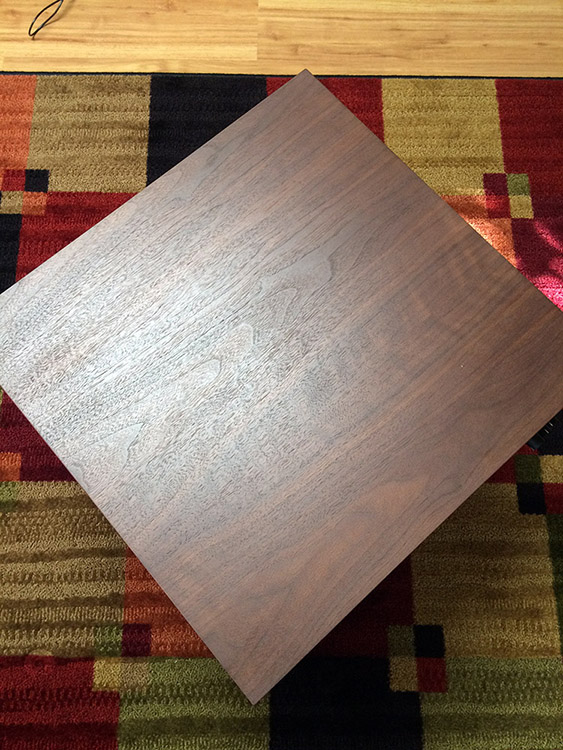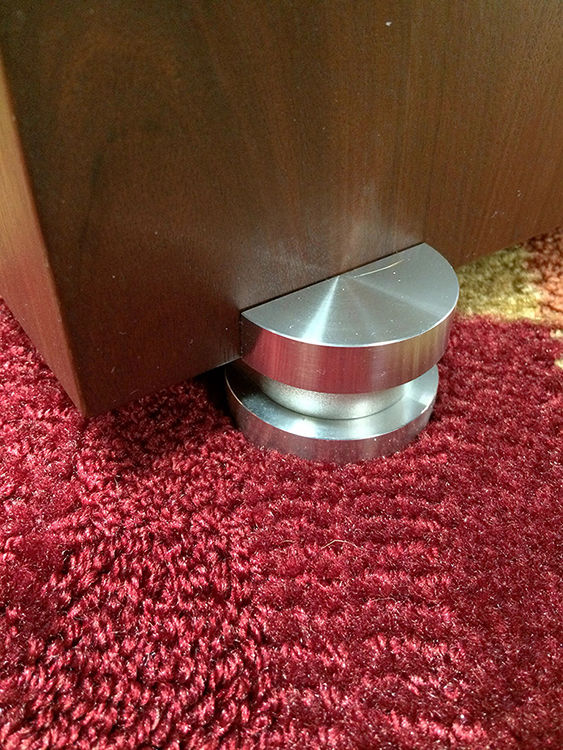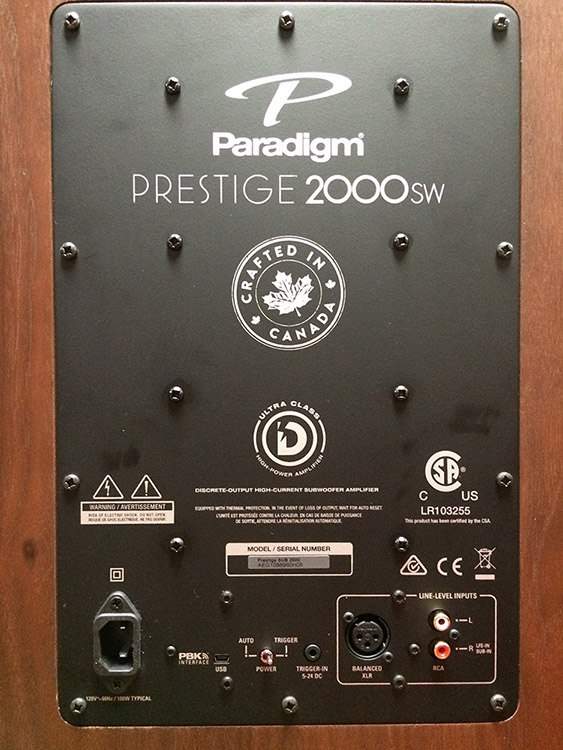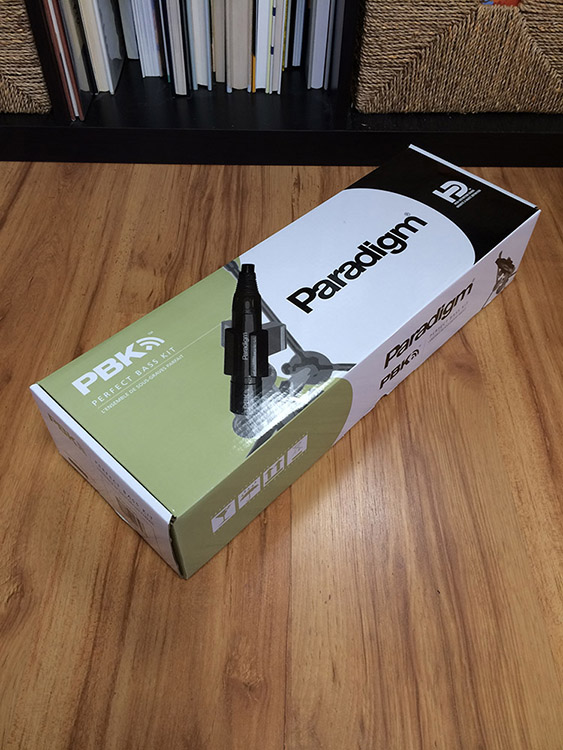The 2000SW promises admirable bass response combined with a number of smart technical and convenience features all wrapped in a very stylish-looking, mid-sized enclosure. Paradigm also saw fit to include their Perfect Bass Kit (PBK) system with the sub which helps ensure an extended flat response in almost any room. I found this entire combination to be attractive, functional, and very capable in my home theater.
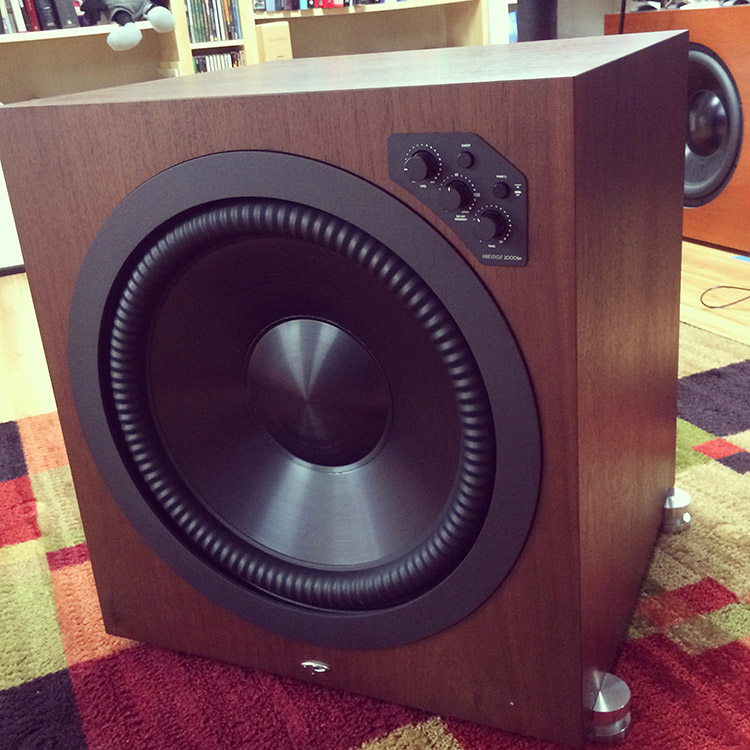
Paradigm Prestige 2000SW Subwoofer
- It has clean and detailed bass reproduction for both movies and music.
- Strong response right down to 20 Hz.
- PBK system is very easy to use and effective to achieve a flat target response.
- Front level and phase controls are a welcome joy.
- Walnut finish on review sub is very attractive.
- Price puts it with some stiff competition.
I confess to having a soft spot in my heart for Paradigm. Being a Canadian expatriate, I tend to root for Canadian companies to do well out in the big, bad audio world. Paradigm introduced the Prestige Line of speakers in 2014 and, last year, Secrets own Piero Gabucci passed favorable judgement on a pair of their 85F tower speakers. This time around we will be talking about bass and, as such, the Prestige 2000SW subwoofer found its way to my abode for review.
Design:
Single Driver, Sealed Enclosure
Drivers:
One 15” Long-throw Aluminum Bass Driver with 3 Inch Voice Coil
Frequency Response:
Extension to 12 Hz
Amplifier:
3,400 Watts Peak; 2,000 Watts RMS Class D
Low Pass Filter:
Continuously Variable from 35 Hz-150 Hz with Bypass Option
Inputs:
RCA Stereo Line Level Inputs (RCA Right Channel Doubles as LFE Input), XLR Balanced LFE Input, USB Port for Measurement Microphone
Dimensions:
22.25″ (56.5 cm) H x 21.75″ (55.2 cm) W x 20.25″ (51.4 cm) D
Weight:
121 Pounds (54.9 kg)
Accessories:
Perfect Bass Kit Consisting of a Calibrated USB Microphone, Adjustable Microphone Stand, Two USB Cables, and Software Disk
MSRP:
$3,999 USD
Company:
SECRETS Tags:
Paradigm, Prestige 2000SW, Subwoofer, PBK
A well designed and very attractive looking sealed subwoofer with an imposing 15 inch aluminum driver, and a 2,000 watt class D amplifier, the Paradigm Prestige 2000SW is looking to be more than just a generic thumping black box in your living room. The addition of PBK also attempts to add a new level of integration and more consistent sound quality to the mix. The question is, while all the R&D and manufacturing is done in Canada, is the almost $4,000 price tag for this subwoofer worth it? Let’s find out!
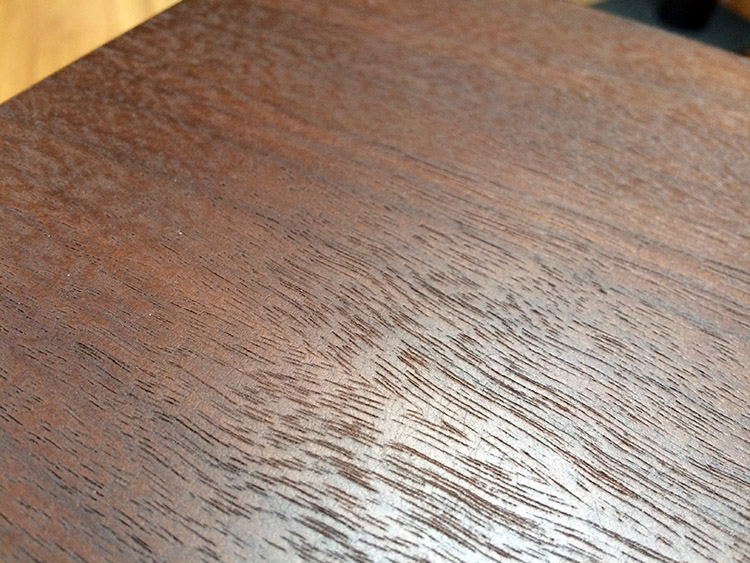
The Paradigm Prestige 2000SW subwoofer arrived expertly boxed and packaged on a shipping pallet. Actually, Paradigm sent two of these beasts because they knew how I like to run multiple subwoofers in my HT (life is full of hardships, I know!). At 121 pound a piece, these suckers are heavy and care should be exercised in moving and unpacking them. It is not a solo job.
Secrets Sponsor
Unpacking instructions were clear and well done so no injuries were incurred, thankfully. Now, because these subwoofers have metal outrigger feet and with their weight being what it is, a word of advice: get some plastic furniture mover sliders and position one under each subwoofer foot. It will make moving and positioning the 2000SW so much easier and your floors or carpeting will be spared the inevitable damage! Paradigm sent me the subwoofers in the matte walnut finish which I found to be very attractive and complementary to my décor, so score one right there for good looks. Another nice touch was that the subwoofer grilles attached to the face of the sub magnetically, so no more little plastic sprues to accidentally break of if you frequently attach and remove the grilles.
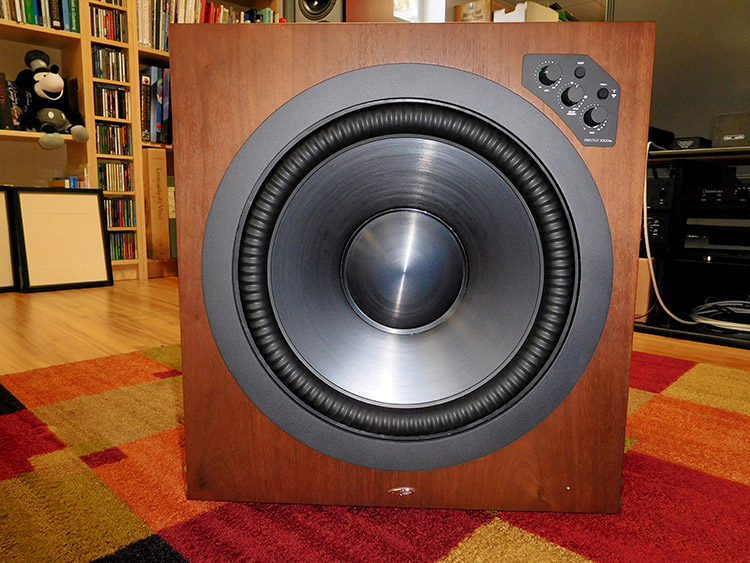

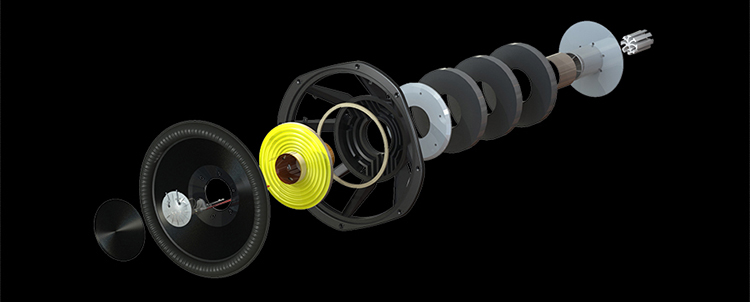
When facing the business end of the 2000SW you are greeted with a handsome-looking 15-inch black-aluminum driver with a substantial ribbed rubber surround. The driver itself is designed and manufactured in-house and features 3-inch dual voice coils, a Nomex spider and aluminum heatsinks. The rubber surround with its distinctive ridges is a patented design and allows for higher movement in the driver with less distortion. To the top right of the driver face are three conveniently positioned knobs and a pair of buttons. The knobs adjust gain, low pass crossover, and phase respectively. The first button, marked Sweep, causes the subwoofer to generate an audible tone sweep from 120 Hz to 20 Hz in order to help locate any annoying rattles or room resonances during set up. The second button engages and defeats the PBK calibration that is uploaded to the sub.
Secrets Sponsor
On the backside of the sub we find a USB port that connects the 2000SW to a computer for uploading calibration data and a toggle switch for setting how the subwoofer powers on. Right beside that is the trigger signal input jack alongside a block of audio line level inputs. These inputs consist of one balanced XLR LFE input and then a pair of stereo RCA inputs with the right channel doing double duty as the unbalanced LFE input. The amplifier itself is a class D design rated at 2000 watts RMS output.
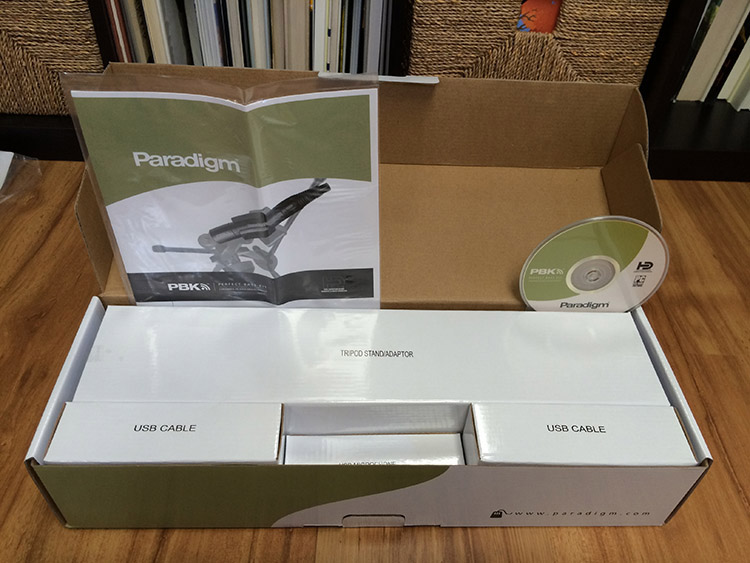
The PBK or “Perfect Bass Kit” that comes packaged with the subwoofer includes a calibrated USB microphone, an adjustable mic stand, two of the longest USB cables I think I’ve ever seen and a disk for installing the PBK software and mic calibration data onto a laptop computer. The PBK package and software as a whole is very similar to the ARC room calibration system found in Anthem home theater receivers and processors and that is a good thing in my book. My previous experience using ARC on an Anthem MRX 310 receiver was very positive so I expected good things from PBK.
For the majority of my testing, a single subwoofer was used and set up along the back wall behind the front right speaker. Paradigm was nice enough to send two identical subwoofers as I usually run twin subs in my home theater to help even out the bass response amongst all the seats. So after all the preliminary testing and measuring was done, I incorporated the second subwoofer into the system and I will note in my impressions when two subs are in use.
Associated equipment used: Denon AVR-X4000 receiver, OPPO BDP-103 Blu-ray player, Salk Songtower main speakers, Zaph Audio ZD3C center channel speaker, Rocket RS300 quasi-dipole surround speakers, Pioneer 50” KURO plasma display.
First things first, this sub is very pretty looking. The coffee colored walnut finish looks like fine furniture and, with the milled aluminum outrigger feet, and simple, tasteful grille, the 2000SW makes for a very classy and sophisticated looking room shaker. The driver itself looks pretty sharp too with that scalloped over-molded surround. It’s unlike anything I’ve ever seen and it definitely looks like it means business (that’s probably why I kept the grille off most of the time). So on aesthetics alone, this sub makes an impact.
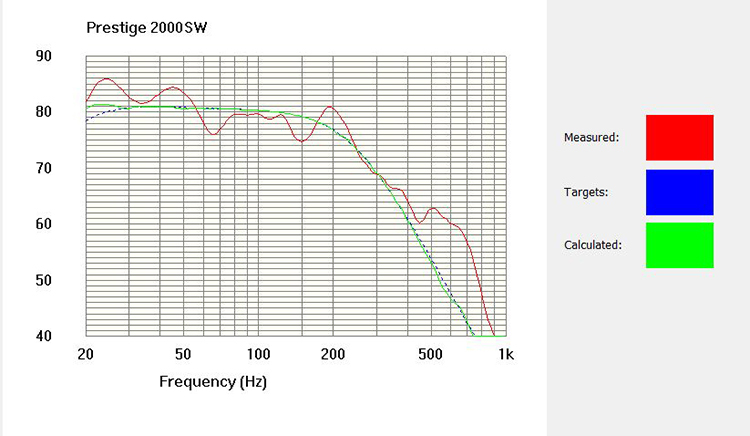
Setting up and calibrating the Paradigm 2000SW turned out to be a pretty straightforward affair. I began by installing the PBK software onto my laptop and loaded up the custom microphone calibration file that was also included on the disk. Then I connected one USB cable from the computer to the subwoofer and then the other USB cable from the computer to the microphone. Beginning with the mic in the primary listening position, and the gain knob set to the 12 o’clock (detente) position, the sub will emit a series of signals that the mic will measure. This process gets repeated in at least 4 additional times with the mic at different positions that must be at least 2 feet apart from one another. This process took me no more than 10 minutes after which I saw a graph that displayed the Measured, Target and Corrected curves overlaid on one another. Once I was satisfied with the result I saved it to my laptop and then uploaded the data to the subwoofer. Disconnect the cables and you’re done, easy peesy! As you can see from the program graphs, PBK aims for the flattest overall bass response among all the seats. Once the data is uploaded to the 2000SW, you must engage the PBK button on the subwoofer’s face to listen in calibrated mode. This also makes it very easy to compare calibrated and non-calibrated results with the touch of a button as well. After initial calibration with PBK, is when you would do any additional room correction that your HT receiver would provide.
The overall sound quality coming from the Paradigm subwoofer was excellent, particularly with music. It reproduced detailed notes and bass lines with resounding clarity and an admirable lack of distortion. For all practical purposes, one of the 2000SW subwoofers was able to produce more than enough output to energize my room, pretty effortlessly, down to just about 20 Hz before a fairly steep roll off of the signal. Although I’ve had subwoofers that have played flat down to about 10 Hz in this room, very few of them have sounded as clean as this Paradigm has in its given operating range. Like the GoldenEar SuperSub XXL that I previously reviewed, the Paradigm 2000SW is not going to be your go to choice if ultimate extension is what you’re after. It does, however, command consideration if fidelity is what you prize first and foremost. With the PBK system set up and running, there was a definite improvement wrought in both the tightness of the bass reproduced and its consistency from seat to seat across my listening area. This was before any additional room correction processing, Audyssey in this case, was applied.
When listening to music, the 2000SW had a knack for sounding utterly natural and seemed to integrate seamlessly with my Salk Songtowers at an 80Hz crossover. All the things I look for when listening to a subwoofer with music seemed to be handled deftly by the Paradigm 2000SW. Lower register piano keys were authoritative and weighty, kick drums hit solidly and were suitably felt at volume, and stand-up bass lines were thick and deep sounding without losing any of the micro details in the string sounds. Overall pitch definition was excellent as well. This subwoofer definitely relayed all the subtle nuances in different bass instruments where lesser designs can sound monotonous and one-note-ish.
On movies there was decent authority and punch to all the material I ran through it. While I felt that I was occasionally missing some of the deeper sounds that you tend to feel more than hear, the 2000SW’s clean and consistent bass reproduction across my entire room was an acceptable compromise to have. In fact, with PBK, when it came time to having both subwoofers running, really was “gilding the lily” so to speak. The biggest benefit with duals in this case was the added headroom so the subs didn’t have to stress so much with challenging material. Although with either single or dual subwoofers in use I never got the sense that I was pushing the 2000SW into uncomfortable territory. I did at times witness some impressive driver cone movement so that scalloped driver surround looks like it is doing its job quite well.
A few of my favorite moments with the Paradigm 2000SW were experienced with:
“Insert Fig.16” Colma by Buckethead
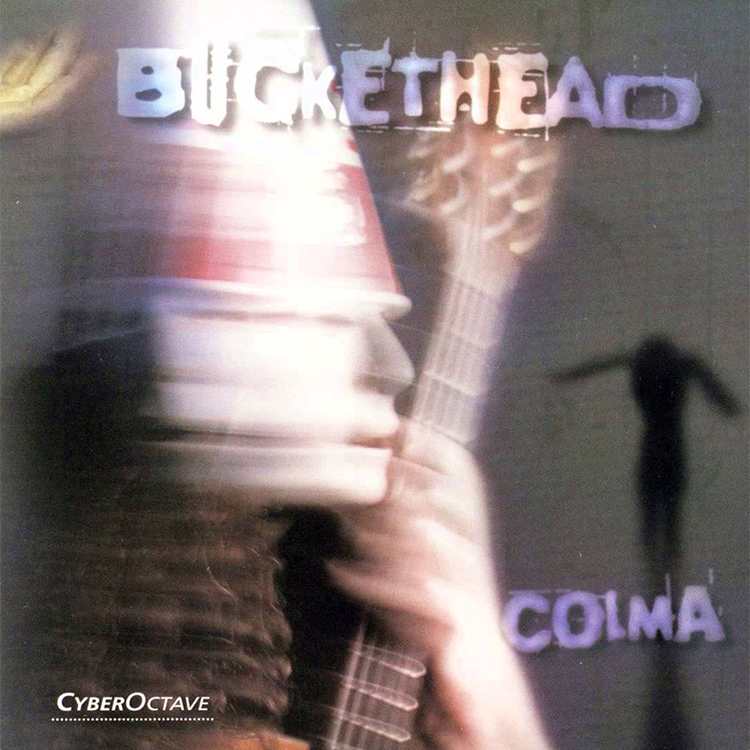
Colma by Buckethead on CyberOctave CD. A regular inhabitant in my rotation of bass testing material, this CD is chock full of solid kick drum, electric bass lines and synthesized atmospherics. It’s very easy for lesser subwoofers to sound very boomy and bloated with this material, but the Paradigm kept everything sounding solid and tight with a decent amount of impact and feel. The first track “Whitewash”, in particular, has a great combination of all those elements I mentioned and the 2000SW does an enviable job of translating it all cleanly and correctly. The kick drum intro to the song sounds especially satisfying.
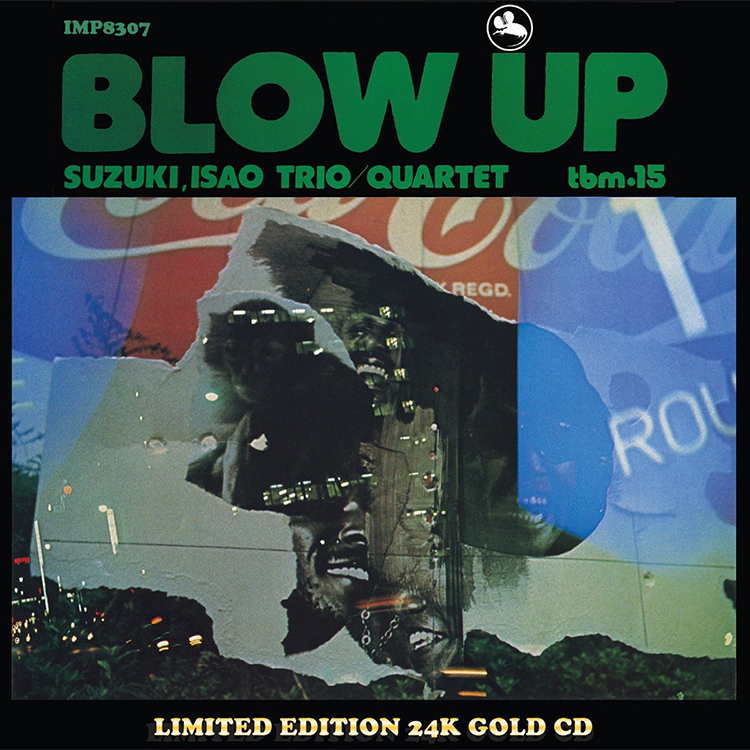
Blow Up by The Isao Suzuki Trio-Quartet on TBM CD. This disc is known for its bold cello and stand-up bass playing and the test for a subwoofer is not just to get the weight and volume of the notes but the detail and decay of them as well. The title track, “Blow Up”, is a frenetic combination of drums, bass plucking and keyboards and the Paradigm sub proved very adept and keeping rhythm and pace. The bass notes remained distinct and deep while being randomly punctuated with kick drum that you felt in the gut. “Tight, solid and natural sounding” were regular observations that I jotted in my notes for this sub.

The Very Best of Erich Kunzil and the Cincinnati Pops, Telarc CD. A great compilation of work by the late conductor of the Cincinnati Pops Orchestra. Plenty of dynamic bass material here from concert bass drum and timpanis to pipe organ and synthesized effects. The Paradigm 2000SW handled everything with aplomb. The bass drum intro to “Sing, Sing, Sing” sounds and feels particularly good through this sub and the pipe organ on the last part of “Little Fugue in G Minor” sounded appropriately deep and majestic.
The “Intro to Also Sprach Zarathustra” was not rendered quite as deep as I’ve heard it in the past but it still sounded quite good and substantial. It’s tracks like this where good sub-20 Hz extension becomes noticeable but they are realistically few and far between. For the other 98 percent of music that I listen to, the Paradigm 2000SW’s performance was more than sufficient.

Interstellar, Bluray, Paramount Pictures. My older son convinced me to watch this one and I’m glad that he won me over. Besides having an excellent storyline, this movie has possibly one of the best Hans Zimmer scores that I’ve heard in a long while. The DTS Master Audio soundtrack was big and atmospheric and had some excellent deep bass throughout the sandstorm scenes on Earth and at various points through the story’s progression in space. The 2000SW played back all these moments cleanly, loudly and without a hint of distortion.
In particular, the scenes where the main characters faced a tsunami sized wave of water on the first planet they land on and the scene where the lead character’s spacecraft enters the black hole gave the Paradigm sub a good workout. The room was given a decent shake to be sure but at no time did the bass sound boomy or sloppy. The PBK system was definitely doing its part to keep any bass sounding tight and punchy across the whole room.
Overall, the Paradigm 2000SW is a very capable, well-constructed and nicely finished subwoofer. Like the song says, it’s built like a “brick house!” I think it’s biggest problem is that the price puts it up against some serious competition. And, it is competition that not only has similarly low distortion, but also some that have lower bass extension too. The recently reviewed Seaton Submersive and the SVS SB-13 comes to mind.
The inclusion of PBK is a notable and effective bonus feature to help justify that price, but not everyone ultimately likes their bass calibrated to just a flat reference point, which is all that PBK currently allows. There is a tab in the software marked “Target” which when clicked, opens up some additional high pass filter and crossover options. With a little trial and error, you can make adjustments that, when combined with an increase in the overall subwoofer gain, will net you some targeted boost in the sub’s response.
This method, however, is not very intuitive and PBK currently limits the High Pass filtering to 20 Hz as its lowest setting. The software itself is such a great tool but I think there could be so much more it could do. What I would love to have seen in the 2000SW is the additional ability to dial in a custom bass curve or “house curve” once the initial flat calibration had been done. Say, for example, I would have liked a gentle sloping increase in the bass response, in my room, up to a maximum 5 dB gain at 25 or 30 Hz, for extra impact in movies without resorting to raising the overall subwoofer volume. If the PBK software could allow that type of response customization, and perhaps a way to switch between two or three saved custom presets, that would add an extra degree of flexibility to an already solid subwoofer package.
I also suspect that the current amplifier and driver are robust enough to allow Paradigm to EQ a little lower extension out of this package while maintaining good reliability and sound quality. The good news is that, in my recent discussions with one of Paradigm’s lead engineers, it appears that they have plans in place to provide some of these additional customizations in a future software update. Plans include the provision for a lower High Pass filter setting, allowing an equalized response down to 15 Hz. Booyah!
All distortion measurements were made within an 80 kHz bandwidth at 90dB SPL and with the microphone 2 meters from one subwoofer. For the frequency response, I placed the microphone 12″ from the center of one of the drivers. PBK was disabled for all these measurements.

This close mic frequency response indicates pretty good performance from a single 15” driver in a sealed enclosure. Notice the moderately steep roll off begins at around 22 Hz.
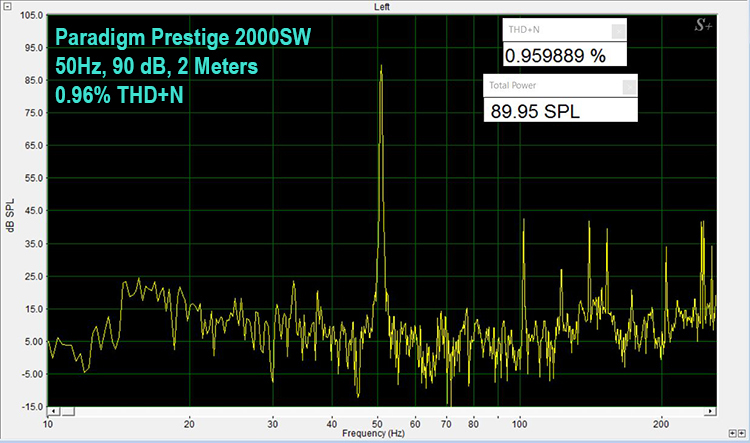
The first distortion graph at 50 Hz shows a THD+N at less than 1%. Nice!
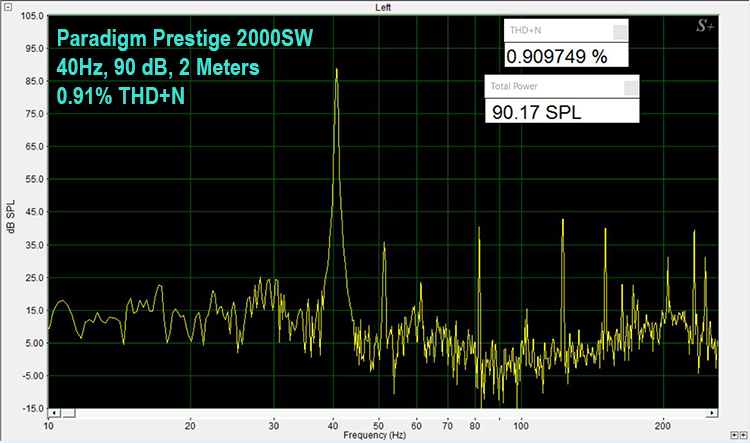
Distortion at 40 Hz remained below 1%.

At 30 Hz, distortion measured lower still, at about half a percent!
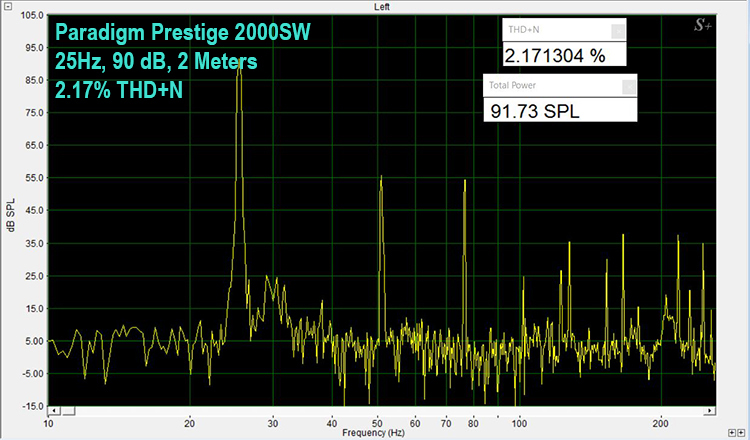
AT 25 Hz, THD+N rose to just over 2%, still very good.
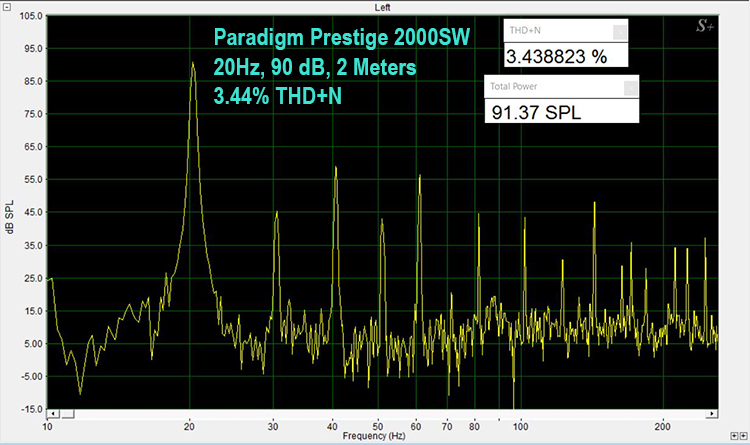
Distortion at 20 Hz capped at about 3%.
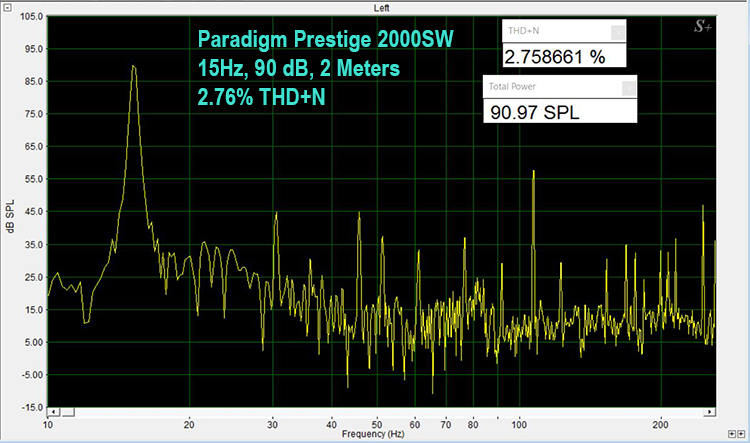
Finally, at 15Hz, distortion actually dropped to 2.7%
All in all, these are excellent measurements.
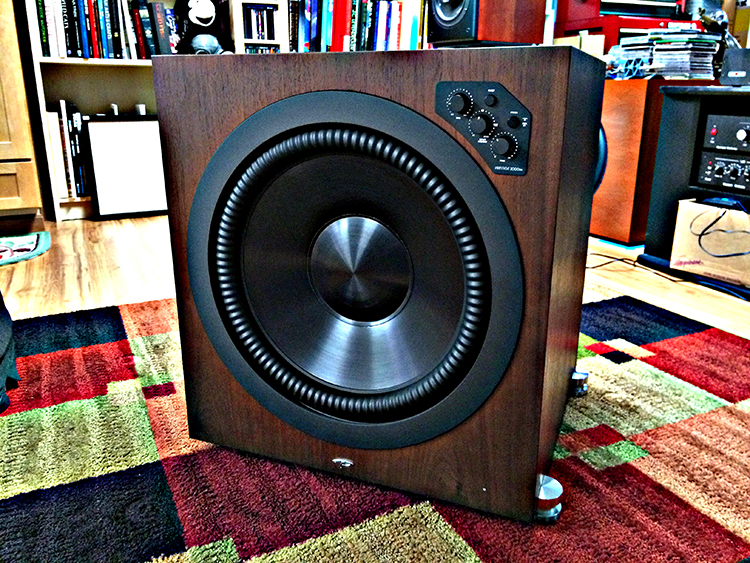
THE PARADIGM PRESTIGE 2000SW is a Handsome, Great Sounding and Well-made Subwoofer Package
- Clean, solid bass reproduction.
- Perfect Bass Kit is a big plus for tuning.
- Front mounted controls like these should be mandatory on all subwoofers.
- Solid construction, heavy almost overbuilt.
- Attractive finish.
- More solid in room extension down to 15 Hz. The driver and amp look like they could handle it.
- Additional tuning and curve customization options in PBK. The foundation looks like it’s already there and it would negate the need for any aftermarket tuning options like MiniDSP, AntiMode and such.
The Paradigm Prestige 2000SW is a handsome, great sounding and well-made subwoofer package. It delivers plenty of clean powerful bass to satisfy all but the deepest demands of the bottom octaves. Music sounded especially good through 2000SW. It blended very well with my main speakers and excelled at tracking all the pitch changes and reproduced all the musical details and impact very adroitly without breaking a sweat. On movies, the Paradigm sub did yeoman’s work as well, shaking the home theater when appropriate, all the while providing some of the cleanest bass quality that I’ve ever heard.
The bundled Perfect Bass Kit provided an effective, convenient and user friendly means to tame and equalize wayward bass response across your whole listening area. It also comes in a modest but attractive variety of finishes to suit many décor situations. While its price is on the steep side for a 15” sealed cube, there is no denying the quality and engineering that has gone into the 2000SW to make it sound as good as it does.
Ultimately if bass quality trumps bass extension on your audio checklist, then the Paradigm Prestige 2000SW deserves some serious consideration. I think PBK, as a tool, is such an effective and great idea that if Paradigm were able to increase its flexibility and tuning customization options, that would push the 2000SW over the top in my book. And, it looks like, they are going to do just that in a future update.
Cue the Commodores please: “Shake it down, shake it down now!”


